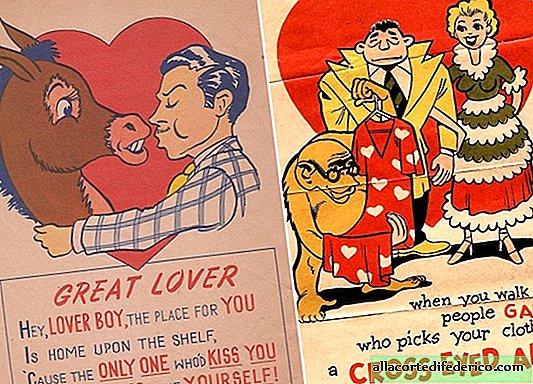What is anti-valentine, and to whom was the evil message meant
Valentine's Day was once not only an occasion to express love with cute postcards and souvenirs, but also provided an opportunity to insult a hated person. Yes, yes, no sweets, hearts and love messages, many on this day received cards with spiteful words.
The so-called vinegar valentines (from vinegar - vinegar) - caricature valentines full of caustic satire and evil words. They were first released in the United States in the 1840s, and from there they ended up in Europe, where they were popular until the middle of the 20th century, and their content was really "bite". Anti-valentines cost a mere penny, printed on cheap paper, so even the poorest segments of the population could afford them. Often, such cards were issued by all the same companies as cards decorated with hearts and flowers. And they sold as many as ordinary valentines.




Anti-Valentine ridiculed various human vices: cowardice, greed, laziness, drunkenness, she denigrated her addressee and scoffed at him. Women sent vicious postcards to unwanted grooms, students to teachers, and workers to nasty bosses. Considering that such cards were sent by mail and the recipient had to pay for an unpleasant message, this was a doubly unpleasant insult for his own money.



They tried to eradicate the harsh tradition in the 19th century, newspapers wrote about the vulgarity and nausea of anti-Valentines, however, the history of these malicious postcards lasted until the 1940s and began to decline only when they massively ceased to celebrate Valentine's Day and give gifts for this holiday. True, some believe that it was anti-valentines that caused the “fall” of Valentine's Day, and interest in him revived only at the end of the twentieth century.























